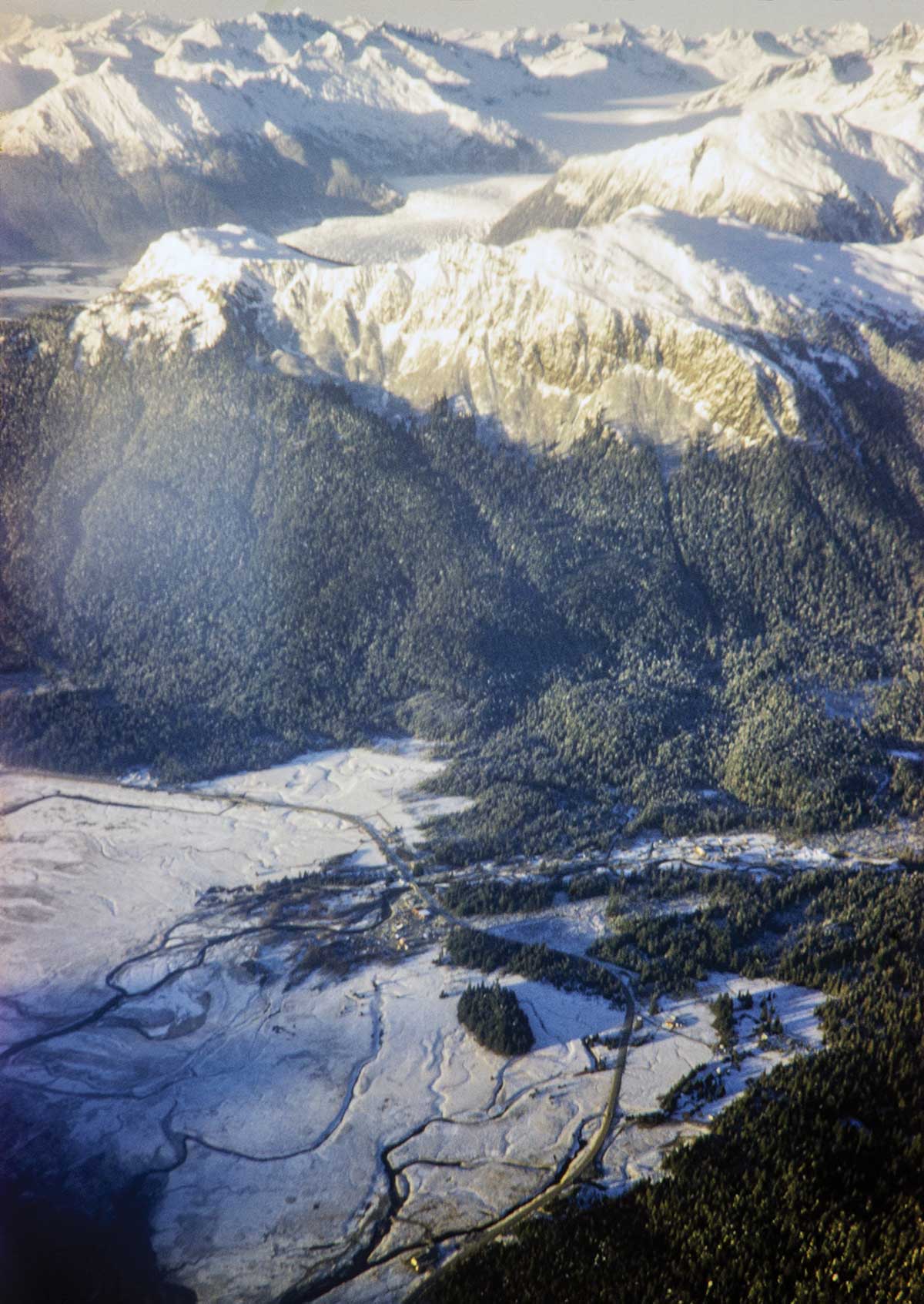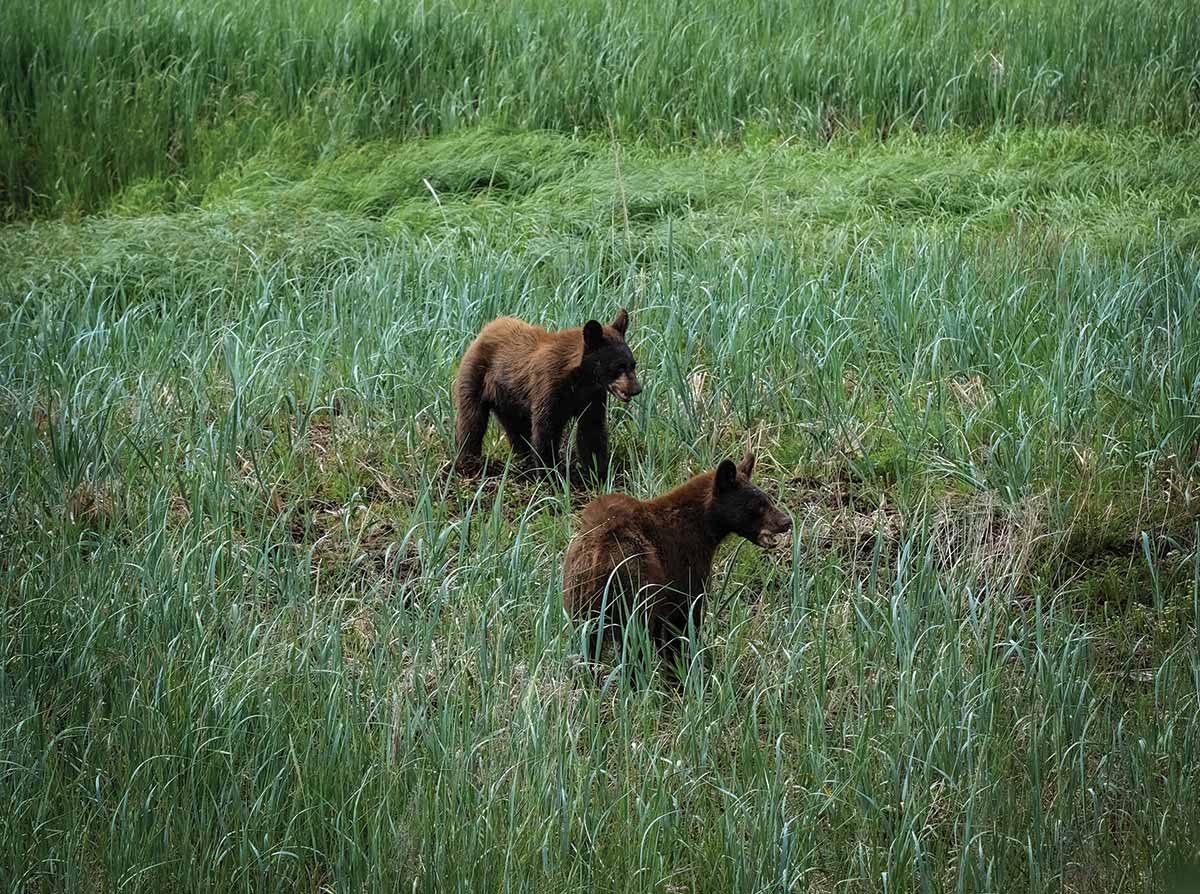uneau adorns the margin between Gastineau Channel and the Boundary Range like a string of pearls. The pendant in the middle is Lemon Creek, a residential neighborhood that also includes the Costco and Home Depot stores, the state prison, and the midtown industrial hub. The jewel in that pendant, though, clashes with the capital city’s gorgeous setting: it’s the town dump.
“Southeast is a lousy place to try to develop a landfill,” says Richard Stokes, a retired solid waste specialist. “In most places, you don’t have the soils. You don’t have the cover material. And there are sensitive streams close by.”
Stokes is amazed that, in fifty years, Capitol Disposal Landfill (CDL) has never posed a crisis for Lemon Creek or the wetlands at the stream’s mouth, just outside the fence. Which is fortunate because alternatives are limited.
“If not in Lemon Creek, where else do you put it?” he asks. “The general area that kept coming up for discussion (although vaguely, in most cases) was farther up the Lemon Creek Valley, more out of sight—which I always thought was a terrible idea because it’s almost impossible to not have a water quality problem with the garbage.”
The bottling plant in the Lemon Creek industrial zone is conveniently close to CDL. “I just did a dump run last Friday. Loaded it up, and then it was like a two-minute drive to the landfill,” Di Laurenzio says.
Yes, he does notice the smell. “From the highway, probably as bad or worse than over where my water plant is,” he says.
Lisa Daugherty also owns a business in the Lemon Creek neighborhood. “There are certain times of the year when you’re coming to the Vanderbilt intersection where it stinks and it’s embarrassing,” she says. “But it’s like, that’s where the landfill is. Nobody made that decision yesterday.”
“The way it was done was, you know, dump it somewhere,” he says, referring to the early practice of dumping on the beach. “That was not uncommon. I don’t think that people gave much thought to garbage dumps.”
News reports in the Alaska Daily Empire circa 1916 corroborate Stokes’ recollection. Rhys Coffee of Juneau, who is compiling a master’s thesis on solid waste management for the University of Washington, unearthed historic articles that describe trash piled on the beach. One proposed solution was to haul the load offshore and dump it in deeper water. Coffee says it’s unclear if that ever happened.
Regional Environmental Protection Manager
Waste Management
Environmental Project Specialist
City and Borough of Juneau
T.R. Merrell

By the ‘80s, CDL was operated by the Tonsgard family, who also own Channel Construction, parent company of Skookum Sales & Recycling across the street from the landfill. William R. Tonsgard II was responsible for adding an incinerator, in the interest of waste reduction.
Stokes shared a memo from January 1985, when he recommended approval for the incinerator, concluding it gave reasonable assurance of meeting air quality standards. “Will the use of the proposed incinerator be to the overall environmental benefit to the Lemon Creek valley and to Juneau in general? A resounding YES,” says the memo, emphasis included. “Use of the incinerator will solve problems with birds, flies, smells, blowing litter, and unaesthetic views of garbage at the landfill… Without the incinerator a new site must be found this year, and I quite frankly don’t see it being done.”
Juneau’s incinerator was retired in 2010 due to age, and current federal regulations make siting a new one impractical.
Anyone driving between downtown Juneau and, say, the Fred Meyer store by the airport can see the landfill from Egan Drive.
“Something unique about Juneau is that the landfill is right off the main road,” says Dianna Robinson. “You can see it growing, so I think people in town are a little more aware of solid waste than other communities I’ve worked with because landfills typically are kind of tucked away and not obvious.”
Robinson is an environmental project specialist at the Engineering and Public Works Department of the City and Borough of Juneau (CBJ). She notes another unique factor in Juneau: the city does not hold a “certificate of convenience and necessity” for solid waste. In Anchorage, for example, the municipality owns and operates the landfill and transfer stations, and the city’s Solid Waste Services does curbside pickup in some parts of town; private companies haul the rest.
Not in Juneau. Customers contract with Alaska Waste for hauling, and CDL is privately owned. “Practically, this means that we’re not the ones that control what happens to our residents’ waste,” Robinson says. “We’re not in the mix at all.”
The landfill was sold in 1999 to Waste Management (WM), a Texas-based company with operations throughout Alaska, which controls CDL to this day.
“So we were kind of out of that loop,” Robinson adds. “We’re not in there negotiating [rates] on behalf of the city.”
Robinson says, “The increased fees were kind of a catalyst for this most recent public interest in the landfill and how solid waste is managed here in Juneau.”
Along with higher rates, WM drastically reduced hours. Commercial customers can dump Monday through Friday, 7 a.m. to 4 p.m., and residential customers are limited to Saturdays, 8 a.m. to Noon. Robinson understands that the new hours are for safety. “Most landfills, the public is not allowed to go up to the working face and dump their trash, right? That’s what was happening in Juneau. That creates a lot of safety concerns for everyone involved,” she says.
On the hauling side, Alaska Waste is trying to expand curbside collection so that customers don’t need to interact with the landfill at all. On the WM side, the company’s regional environmental protection manager Jim Denson acknowledges that the changes were a difficult decision. “We’re always working to improve our operations—to ensure we meet environmental requirements and to be the best neighbor that we can be,” Denson says.
Stokes gives WM some credit. “I’ve not been a big fan of Waste Management, but they have done a much better job” than the landfill’s previous owners, in his opinion, “but it’s a losing job. I mean, they can’t keep up with it, obviously.”
Juneau’s landfill receives about 100 tons of trash each day. DEC estimates CDL will last approximately twenty more years, with a closing date anytime between 2037 and 2046.
Plausible, but Stokes has heard it before. “I have laughed about this,” he says. “Over the years, it always seemed to be, ‘Five more years and the landfill is filled.’ And of course, I don’t think any of us in our wildest imagination envisioned the mountain that has been created.”
Carter Damaska | Alaska Business

Composting is Daugherty’s bread and butter, as owner of Juneau Composts. “When you look at the piece of the pie of what goes in a landfill, organic things that are compostable make up the largest wedge. It includes food scraps, it includes yard debris, it includes paper,” Daugherty says.
She points to documents since 1990 that recommend the city start composting, yet it never happened. “That’s why I started this business,” she says. “I was just tired of hearing at endless meetings, ‘Oh, the city should compost.’ So I just started it.”
Compost is a mix of nitrogen and carbon. “Greens and browns is what everyone calls it,” Daugherty says. “We’re using food scraps for our greens, and we’re using woodier things like wood chips, sawdust, shavings, manure, and bedding for our carbon sources.”
Businesses and residents pay Juneau Composts to collect food scraps, so raw material is not an expense. But labor is intensive. “It’s not the same as a landfill where you just stack it, drive over it, and the next day you stack it and drive over it,” Daugherty says. “We have to process that material time and time again. We touch every piece of material probably twenty times before it is going out the door as a manufactured, finished product.”
Those value-added products—potting mix, seed starting mix, and raised bed mix—are sold to home gardeners and local garden retailers. “There’s a few farmers in Juneau, and they buy their composts from us, too. We do ship some to other Southeast communities,” Daugherty says.
Robinson, as a member of the gardening club, is a customer too, but she says CBJ is not. “Our parks and recreation department, they have to import a lot of material every year because they have their greenhouse,” says Robinson. “Also our streets department uses it for any kind of remediation along the side of the road.”
City action is what Daugherty has been waiting for. “If the city were to divert the 20 million pounds a year that is potentially compostable from the waste stream,” she says, “I could see that being a sustainable model for being able to sell that amount every year.”
However, Juneau Composts could hardly compete with a taxpayer-funded service. “In the beginning, it was pretty clear that I was going to get put out of business through, basically, them setting up their own compost facility adjacent to my compost facility and possibly offering services for free and offering finished composts for free,” Daugherty says. “It’d be unfortunate if all of [Juneau Compost’s] work got swept away because they got some federal money and decide to start their own program from scratch.”
According to Robinson, CBJ plans to contract with a third party to operate the city compost facility. Whether that’s Daugherty or someone else, no one can say. Until then, “I’m in this limbo for the next three or so years,” Daugherty says. “Can I invest in my business or not? Am I going to be put out of business or not?”
While her long-term business decisions are paralyzed, Daugherty is carrying on. “To me, composting is a simple solution to solving landfill problems, and that’s why I do it,” she says.
Alaska Pure Mountain Spring Water is bringing more aluminum to Juneau to be disposed of by its neighbors at Skookum. Di Laurenzio started canning his water last summer, but with a twist. Or rather, an un-twist: the lids have a resealable tab, which he sources from Germany.
“It’d be great for the tourist season, when they’re used to getting little plastic bottles with the screw tops on them,” Di Laurenzio says. “I was thinking if they had cans, the regular pop-top lids would be kind of hard to go on hikes or adventures, you know? So I thought it’d be pretty dang perfect to utilize those lids.”
His aunt and uncle, who owned the company before him, previously tried single-use plastic bottles. “It made money, but it wasn’t good for the landfill or the environment. I’m kind of the next generation that’s looking after those types of things, and these cans are completely recyclable,” Di Laurenzio says. The plastic tab is shredded with the rest of the can and separated. All-aluminum twist-tops exist, but he says they don’t fit in his canning line without expensive upgrades.
Engineering and Public Works has plans for its own upgrades. Robinson says, “There are a lot of different things we’re looking at, and we’ve dedicated more funding to that planning, but that won’t begin until July, when our next fiscal year starts.”
The city must proceed cautiously or risk backlash, as with February’s rate and hour changes. Stokes says, “Any sort of change in a garbage site has always been really controversial. I mean, a large part of my career was going to public hearings, where the only thing people could agree on was that I was the one at fault.
An unchanging status quo makes garbage easy to ignore. “You put it in your trash can, it goes away,” Robinson says. “You don’t think about it, but there are so many moving pieces to it. I’ve been working in solid waste for about eight years, and there’s still things I learn all the time.”